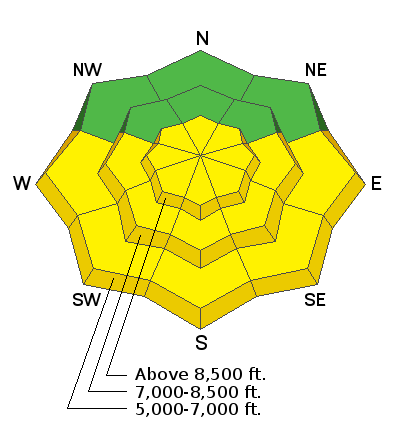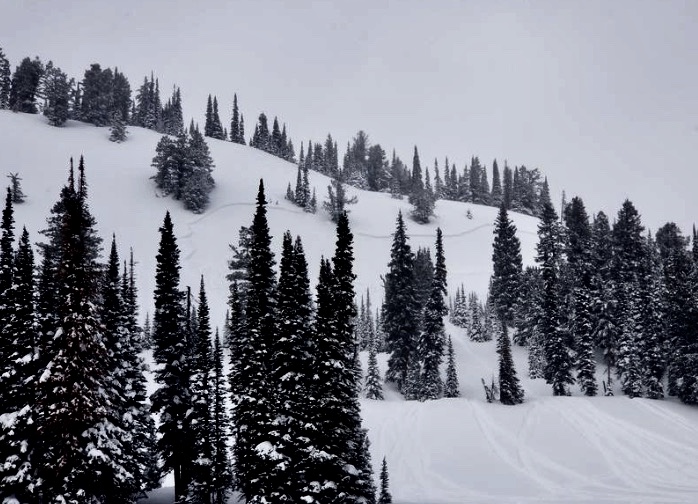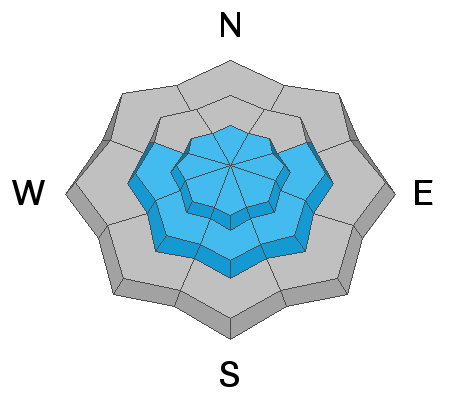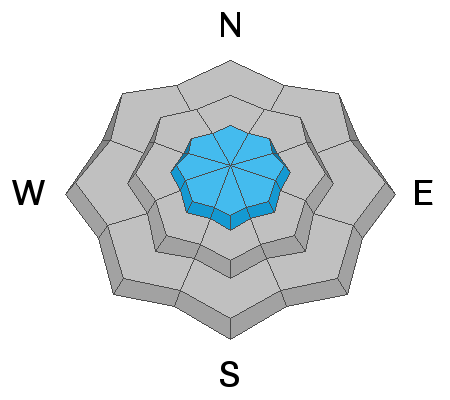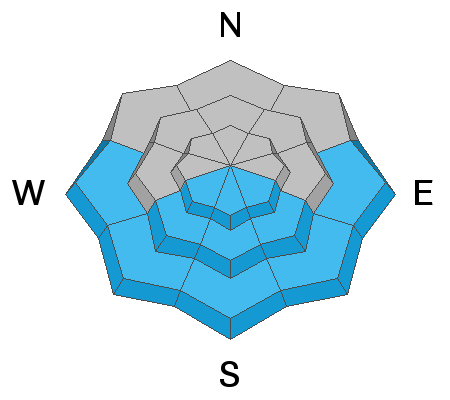Enjoy spring skiing at Snowbasin Resort. The UAC has discount Snowbasin tickets available.
HEREThe Tony Grove Snotel at 8400' reports 20 ºF this morning and there is 97" of total snow with 109% of average SWE for the date. It's 17 ºF at the 9700' CSI Logan Peak weather station, and easterly winds are currently averaging around 15 mph. Although the snow on most slopes is stable, heightened avalanche conditions still exist in places, and you might trigger 1 to 2 foot deep avalanches on some upper and mid elevation slopes. Solar warming could cause heightened wet avalanche conditions on sunny slopes today.
A fairly strong storm system is expected to cross the area midweek with accumulating snow to the valley floors. High pressure will build in after that bringing a more prolonged stretch of dry and mild weather. It'll be mostly sunny today, with high temperatures at 8500' expected be around 34 ºF, with 10 mph east winds, veering from the west-southwest in the afternoon. It will be mostly clear tonight, low temperatures expected to be around 17º F, with 5 to 10 mph south-southwest winds. It'll be sunny tomorrow with high temperatures around 32 ºF, with 8 to 14 mph south-southwest wind.
Snowmobilers triggered a couple good sized soft slab avalanches on Saturday. One on a south facing slope at around 8700' in elevation in Boss Canyon in Franklin Basin near the Idaho State Line, the other on a southeast facing slope at around 8400' in White Pine Canyon. The avalanches appear to have failed on a thin sugary or faceted persistent weak layer on top of a melt-freeze crust that was on the snow surface at the beginning of March.
Sled triggered avalanche in Boss Canyon from Saturday 3/9/19
A sled triggered soft slab avalanche from Saturday (3/9/19) in White Pine Canyon.

